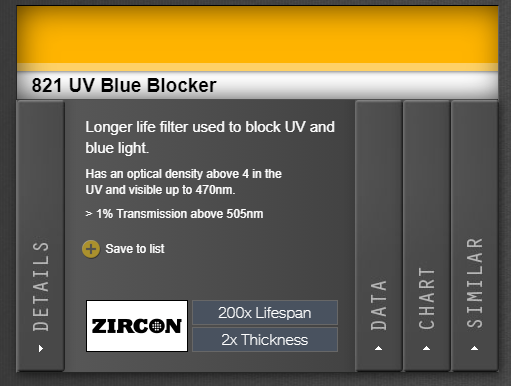The state of Florida has issued a new law, 62B-55, also known as "Model Lighting Ordinance for Sea Turtle Protection" which went into effect December 15, 2020. This law protects the nesting of sea turtles and their hatchlings against the harsh lighting of residential homes and commercial buildings on beachfront properties. It enables the property owners to adopt artificial lighting sources to help minimize the harmful effects of light pollution in sea turtle nesting areas. Current lights and light sources that are visible from the beach must be replaced or modified to conform to the new law. This includes all exterior, structural, decorative, and landscaping lighting.
In order to stay in compliance with the new law, Lee Filters offers a gel sheet that is considered “turtle safe”, which is Lee Filters 821 UV Blue Blocker. This gel sheet will bring your lighting down to 1500K and is used to block UV and blue light. By using this gel sheet, you can help to save the sea turtles and their nesting areas. It can also help you modify your lighting without costly replacements or retrofits!
You can find out more about rules and procedures that will help guide you on making your beachfront property safe for sea turtles. Please view the Sea Turtle Lighting Guidelines for more information.
Rules of Beachfront Lighting
- Keep it Low
- The fixtures should be mounted as low as possible.
- You must use bulbs that produce a low wattage/lumen.
- Keep it Shielded
- The fixtures should be facing downward.
- The fixtures must also shield the bulb, lamp, or lens from the beach.
- Keep it Long
- Lamps/Bulbs can only produce a long wavelength light (560 nm or greater, which is amber, orange, or red).
How to Decrease the Light-Pollution that Affects Sea Turtles
- Turn off unnecessary lights
- Shield the light source
- Replace fixtures
- Replace lighting with the lowest wattage amber, orange, or red LEDs
- Plant or improve vegetation buffers
- Use motion detector shielded lights
- Apply window tint
- Use window treatments
Please call or chat with us if you have any questions on how we can help make your beachfront property “turtle safe!”
Note: Some images and links from The Florida Fish and Wildlife Conservation Commission.



